
Edward Winter

Below is a pictorial A to Z of chess prodigies up to circa 1950. The various claims are reported ‘flatly’, i.e. with no expression of suspicion or incredulity at any of the more fanciful statements found in print over the years. The term prodigy is, moreover, interpreted here quite loosely, and we have been more inclined to include ‘older youngsters’ from the nineteenth century than from the twentieth. First presented in C.N. 3812 (on 3 July 2005), this directory is expanded from time to time, and any additions, criticisms or other comments from readers will be appreciated.
Allen, Richard
C.N. 2845 culled, from page 84 of CHESS, January 1951, a game won by six-year-old Richard Allen against his father:
Richard Allen – Clifford Allen
Normanton, 26 December 1950
Sicilian Defence
1 e4 c5 2 Nf3 Nc6 3 d4 cxd4 4 Nxd4 e6 5 Bb5 Nf6 6 Nc3 e5 7 Nxc6 bxc6 8 Bc4 d5 9 exd5 cxd5 10 Nxd5 Nxd5 11 Bxd5 Rb8

12 O-O (From CHESS: ‘If the near-masters among our readers want to point out that 12 Bxf7+ Ke7 12 Bg5+ would have won Black’s queen, etc., etc., we ask them to remember that White is only six years old.’ However, see below.) 12…Bc5 13 Re1 Qc7 14 Qe2 Bd6 15 Be3 O-O 16 Rad1 Rxb2 17 Rd2 e4 18 Bxe4 Bxh2+ 19 Kf1 f5 20 Bd5+ Kh8 21 c4 Rxd2 22 Qxd2 f4 23 Bd4 Ba6 24 Qd3 Rd8 25 Be5 Qc8 26 Qd4 h6 27 Bxg7+ Kh7 28 Re7 Rg8 29 Qd3+ Qf5 30 Qxf5 mate.
Source: CHESS, January 1951, page 84.
Concerning White’s 12th move, on page 103 of the February 1951 CHESS a reader, T. Harman of Coventry, pointed out the line 12…Kxf7 13 Qxd8 Bb4+ 14 Qd2 Bxd2+ 15 Kxd2 and ‘Black could at least make White’s win difficult’. He concluded that 12 O-O was a good move, and the Editor (B.H. Wood) commented: ‘Several other correspondents similarly put us in our place.’
Allwright, Marianne
See C.N. 10372.
Ashby, Master
An account of the son of F.L. Ashby of Cheddleton, England, who learned the moves of chess at the age of three, appeared on page 40 of the February 1920 BCM. See pages 54-55 of Chess Explorations.
Baird, Lilian
Lilian Baird (1881-1977) was referred to on page 130 of Kings, Commoners and Knaves. An early composition by her was on page 103 of the February 1891 BCM. Four of her problems were published on page 14 of The Chess Bouquet by F.R. Gittins (London, 1897), from which the photograph below is taken:
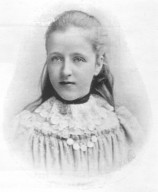
Lilian Baird
C.N. 3818:
Chris Ravilious (Eastbourne, England) reports that in 1995 he brought out a monograph on a prodigy mentioned in C.N. 3812, Lilian Baird, under the title Lilian An Episode in Chess Problem History.
Billikopf, Jacob
Jacob Billikopf (see page 130 of Kings, Commoners and Knaves) was featured on page 335 of the November 1897 American Chess Magazine:
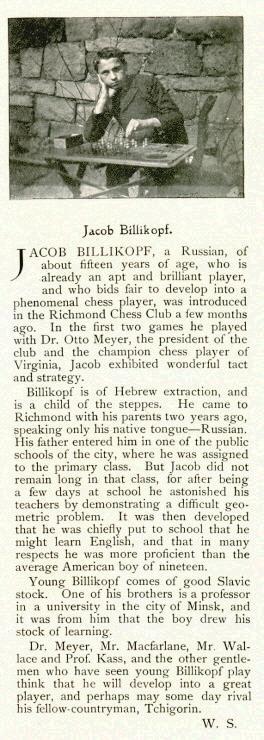
The following appeared in C.N. 6179:
Diego Monteiro de Oliveira (Curitiba, Brazil) and Jim Thompson (Jefferson, NC, USA) identify him as the social worker and leader in Jewish philanthropy who was also a prominent figure in labour arbitration.
His obituary on page 17 of the 1 January 1951 issue of the New York Times stated that he was born in Vilnius on 1 June 1883 and died in Philadelphia on 31 December 1950.
Blumenschein, Ernest
The conclusion to a game by Ernest Blumenschein against W.H. Smith in Dayton on 25 February 1890 was warmly received by Steinitz on page 155 of the May 1890 International Chess Magazine. Blumenschein was aged 15 at the time. See page 78 of A Chess Omnibus.
Boardman, Harry A.
The problemist Harry A. Boardman (1863-1935) was discussed in C.N. 3410, where several of his compositions as a child were given. He developed into a prominent figure in the problem world. The sketch below was published on page 1374 of the Scientific American Supplement, 25 August 1877.
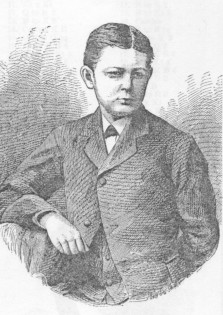
Harry A. Boardman
Božić, M.
From page 453 of the November 1934 BCM: ‘Yugoslavia. A new infant chess prodigy has been discovered at Belgrade, Molorad [sic: Milorad] Božić, the six-year-old son of an innkeeper in that city. Though he is already known as “little Alekhine”, it is perhaps best to await developments. Not all Samuel Rechevskis make good as he has done.’
Brereton, Master
A game won by him, at the age of seven, against his father, W.D. Brereton, in Pittsburg in 1898 was given on page 140 of Kings, Commoners and Knaves, from the Philadelphia Public Ledger of 10 February 1898.
Brown, Frank and Fred
See C.N.s 9795 and 9804.
Capablanca, José Raúl
A fine set of photographs of the young Capablanca accompanied an article about him by Olga Capablanca on pages 20-37 of Chessworld, May-June 1964. Almost all of his games as a prodigy were published in The Unknown Capablanca by D. Hooper and D. Brandreth (London, 1975). For additional data see our 1989 book on Capablanca, which also contained some rare photographs of the prodigy. Five further specimens are given below:
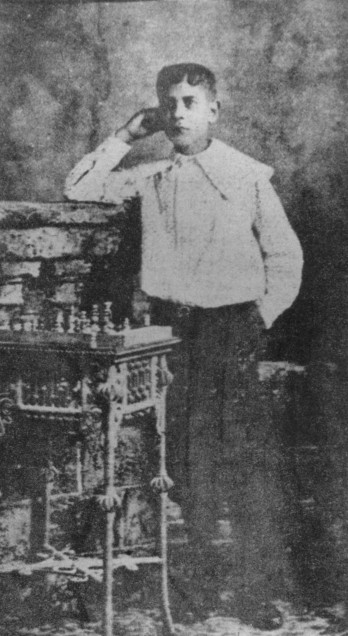
José Raúl Capablanca, aged ten
The next photograph was published on page 142 of El Fígaro, 30 March 1902. Capablanca is standing on the far right during a game between Corzo (Juan or Enrique?) and Manuel Márquez Sterling. Seated from left to right are: José Díaz, Eduardo Delgado, the Marqués de la Gratitud, Ramón Pardo and Gonzalo Herrera.
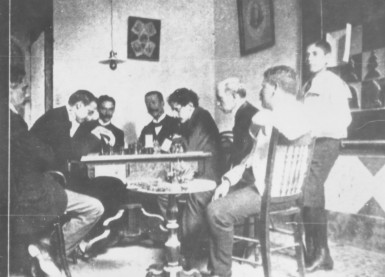
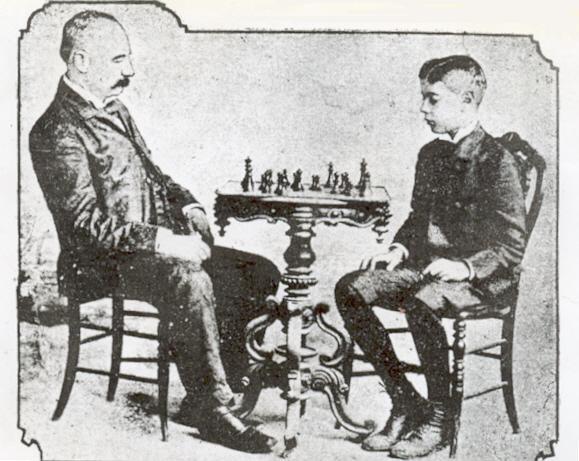
Antonio Fiol and José Raúl Capablanca
The picture below shows members of the Havana Chess Club in the cable match against the Manhattan Chess Club in April 1903: Manuel Márquez Sterling, Antonio Fiol, Enrique Corzo, Juan Corzo, José Antonio Blanco and José Raúl Capablanca.
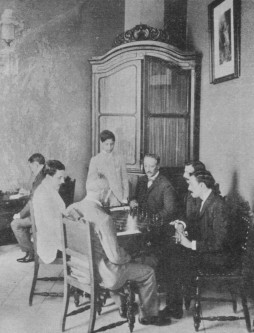
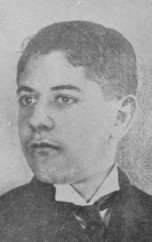
Childs, William H.
When the game below was published on page 112 of the Westminster Papers, 2 December 1872 the players were merely identified as W.H.C. and C.R.H.:
1 e4 e5 2 Nf3 Nc6 3 d4 exd4 4 Bc4 Bc5 5 Ng5 Nh6 6 Nxf7 Nxf7 7 Bxf7+ Kxf7 8 Qh5+ g6 9 Qxc5 d5 10 O-O dxe4 11 c3 Re8 12 Bg5 Qd7 13 Nd2 b6 14 Qc4+ Kg7 15 Rae1 dxc3 16 Qxc3+ Kg8 17 Nxe4 Rxe4 18 Rxe4 Bb7 19 Qc4+ Kg7 20 Rf4 Rf8 21 Bh6+ Kxh6 22 Rxf8 Ne5 23 Qf4+ Kg7 24 Qf6+ Kh6 25 Qxe5 Resigns.
The Papers commented:
‘Is the world about to witness the advent of another Morphy? Here is a little game which we cut from the capital chess column in the Hartford Times, the editor informing us that the player of the white pieces is a boy “low down in the teens”, who learned the moves only seven or eight months ago.’
The column in the US newspaper had appeared in the 19 October 1872 edition.
Coyle, Claude H.
The American Chess World of January 1901, page 19 published the following game with the winner’s brief notes and introduced as follows: ‘Played in the second Iowa Correspondence Tournament. C.H. Coyle is only 17 years old and gives promise of being a fine chessplayer.’
Frank Bechley – Claude H.
Coyle
Correspondence, circa 1900
Evans Gambit Accepted
1 e4 e5 2 Nf3 Nc6 3 Bc4 Bc5 4 b4 Bxb4 5 c3 Ba5 6 d4 exd4 7 O-O d6 8 cxd4 Bb6 9 Nc3 Na5 10 Bg5 Ne7 11 Bxe7 Qxe7 12 Nd5 Qd8 13 Bd3 Be6 14 Nf4 O-O 15 Re1 Qd7 16 Ng5 Bxd4 17 e5 Bf5 18 e6 fxe6 19 Rxe6 Bxa1 20 Qh5 Bxd3 21 Ng6 h6 22 Ne7+ Qxe7 23 Rxe7 hxg5 24 Qxg5 Bf6 25 Qd5+ Kh8 26 Re3 Bh7 27 Qxa5 Bd4 28 Rf3 Be4 29 Rh3+ Kg8 30 White resigns.
Cross, James
James Cross came to prominence as a 16-year-old, being praised on page 32 of the December 1946 Chess Review. Two of his games were given on pages 125-126 of A Chess Omnibus.
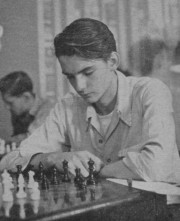
James Cross
Dawson, Cedric
From the American Chess Bulletin, May-June 1927, page 111:
‘In the diminutive person of Cedric Dawson of Lyndhurst, NJ another chess prodigy, 14 years of age, is coming to the front. At any rate, he has been making a distinct impression upon the chess circles of that state and created quite a sensation when, as one of 13 opponents, he was the only one to win a game from Charles Jaffe in a simultaneous exhibition arranged by the Passaic Chess Club at the YMCA of that place on 17 May. A drawn game was scored by Dr William H. Preuss, who, as “Rookookoo”, is conducting a very lively chess department in the Saturday issue of the Passaic Daily News.’
del Sel, Luis Enrique
Page 374 of the October 1921 BCM reported from the April-June 1921 Revista del Club Argentino de Ajedrez that Luis Enrique del Sel, born in Santa Rosa on 25 July 1908, learned chess at the age of nine and was a strong player. See page 55 of Chess Explorations.
Derrickson, George H.
The winner of a famous brilliancy over the board, George H. Derrickson was also an accomplished problemist. He died in Philadelphia in 1862 aged about 17. See pages 229-230 of Kings, Commoners and Knaves and pages 343-344 of A Chess Omnibus. The photograph of him below is reproduced courtesy of the Library Company of Philadelphia.
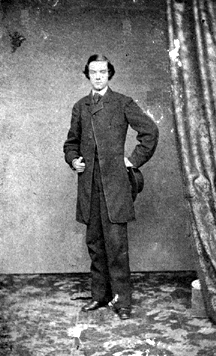
George H. Derrickson
His famous brilliancy was annotated by Emanuel Lasker on pages 168-170 of the London Chess Fortnightly, 30 July 1893.
Edwards, Edward Mitchell
A deeply-researched article on Edward Mitchell Edwards (1896-1987) by Olimpiu G. Urcan was posted at the Chess Café on 26 June 2010.
Eichholz, Elliot Franklin
A problem composed by Elliot Franklin Eichholz at the age of five was published on page 132 of the May-June 1917 American Chess Bulletin. See C.N. 2184 on page 234 of Kings, Commoners and Knaves.
Elsner, Max
Page 356 of the November 1885 Deutsche Schachzeitung gave a game Max Elsner won against his mother in Klein Wanzleben on 13 November 1885 when he was six and three-quarters, although, in an unresolved discrepancy, the magazine also stated that he was born on 10 February 1871. See pages 129-130 of Kings, Commoners and Knaves.
Fairhurst, William Albert
A victory by William Albert Fairhurst at the age of 18 against Boris Kostić (Manchester, 1922) was given on page 230 of the Chess Amateur, May 1922 and on page 80 of A Chess Omnibus.
Falk, Dolo

From Stanisławów (born on 17 January 1898). See C.N.s 4623 and C.N. 6341, as well as the essay Ein fünfjähriger Champion (1903) by Tarrasch towards the end of his book Die moderne Schachpartie (page numbers vary according to the edition). A further item is C.N. 10027.
Fernández, Dionisio R.
Dionisio R. Fernández, aged 15, was featured on page 60 of the February 1929 issue of El Ajedrez Americano with the following game:
Domínguez – Dionisio R. Fernández
Lanús, circa 1928
Scotch Gambit
1 e4 e5 2 Nf3 Nc6 3 d4 exd4 4 Bc4 Bc5 5 Ng5 Nh6 6 Nxf7 Nxf7 7 Bxf7+ Kxf7 8 Qh5+ g6 9 Qxc5 d5 10 Qxd5+ Qxd5 11 exd5 Re8+ 12 Kd1 Nb4 13 Bf4 Nxd5 14 Bg3 c5 15 Na3 Bg4+ 16 f3 Ne3+ 17 Kd2 Bf5 18 Nb5 Nc4+ 19 Kd1 Nxb2+ 20 Kc1 Nc4 21 Nc7
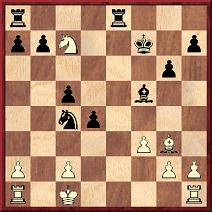
21...Re2 22 Nxa8 Rxc2+ 23 Kd1 Ne3+ 24 Ke1 Bd3 and mate next move.
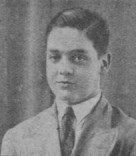
Dionisio R. Fernández
Ferret, Paul
Page 158 of the May 1912 Deutsche Schachzeitung published a game played by Paul Ferret at the age of ten:
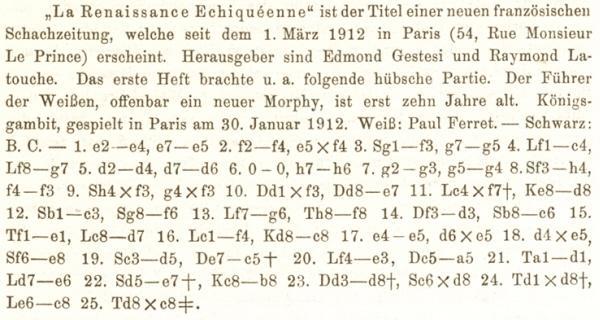
1 e4 e5 2 f4 exf4 3 Nf3 g5 4 Bc4 Bg7 5 d4 d6 6 O-O h6 7 g3 g4 8 Nh4 f3 9 Nxf3 gxf3 10 Qxf3 Qe7 11 Bxf7+ Kd8 12 Nc3 Nf6 13 Bg6 Rf8 14 Qd3 Nc6 15 Re1 Bd7 16 Bf4 Kc8 17 e5 dxe5 18 dxe5 Ne8 19 Nd5 Qc5+ 20 Be3 Qa5 21 Rad1 Be6 22 Ne7+ Kb8 23 Qd8+ Nxd8 24 Rxd8+ Bc8 25 Rxc8 mate.
See C.N.s 7410 and 7417.
Fischer, Bobby (Robert James)
Pro memoria.
Fleischmann (‘Fleischman’), Simon and Bianca (‘Blanca’)
Pages 52-53 of Chess Explorations quoted from La Estrategia Mexicana, October 1876 a reference to ‘Miss Blanca Fleischmann [sic], the celebrated and distinguished girl from Buffalo in the United States’, a problemist and player. As noted in C.N. 3402, the chess column by Sam Loyd in Scientific American Supplement, 19 January 1878 (page 1708) gave a problem by Simon Fleischman[n] and reported that both he and his sister had ‘developed a remarkable aptitude for chess and have published many excellent problems’. For further information, see C.N. 10473.
Flores, Rodrigo
Rodrigo Flores was born in Chile in 1913. His activities as a prodigy were presented in C.N. 3046, with four games played in the 1920s. See our feature article The Chess Prodigy Rodrigo Flores.
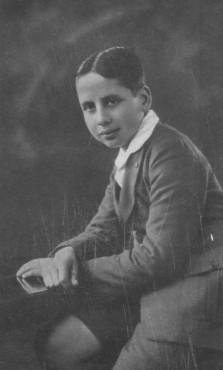
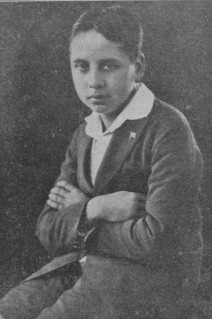
Rodrigo Flores
Gedroiz (Gedroits), Prince
See C.N.s 10196, 10201, 11336, 11358 and 11457. From C.N. 11358:
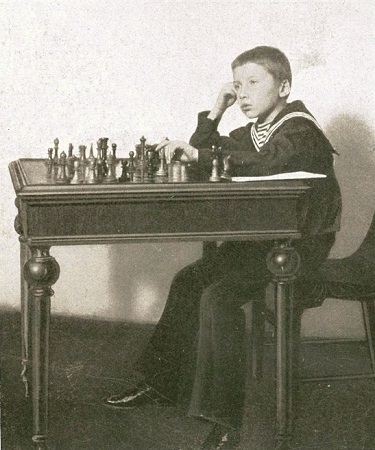
Graef, Charles and Frederic
A game between these brothers (aged 13 and 14 respectively) in Long Island circa 1857 was given on pages 241-242 of the Chess Monthly, August 1857 and reproduced on page 76 of A Chess Omnibus (C.N. 2297).
Frederic Graef was White:
1 e4 e5 2 Nf3 Nc6 3 Bc4 Bc5 4 b4 Bxb4 5 c3 Bc5 6 O-O d6 7 d4 exd4 8 cxd4 Bb6 9 h3 Nge7 10 Bg5 O-O 11 Nc3 h6 12 Bh4 Be6 13 d5 Na5 14 Bd3 Bd7 15 Re1 Qe8 16 e5 dxe5 17 Nxe5 Bc5 18 Qe2 Rd8
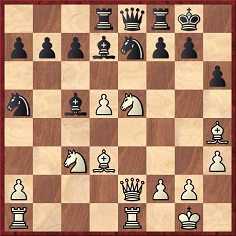
19 Ne4 Bd4 20 Nxd7 Rxd7 21 Rac1 Nxd5 22 Nc5 Qxe2 23 Rxe2 Bxc5 24 Rxc5 b6 25 Bf5 bxc5 26 Bxd7 Nc3 27 Rc2 Ne4 28 f3 g5 29 fxe4 gxh4 30 Rxc5 Rd8 31 Rxc7 a6 32 Kf2 Kf8 33 Kf3 Ke7 34 Bf5+ Kf6 35 Kg4 Rd2 36 a3 Rxg2+ 37 Kxh4 Ra2 38 Ra7 Rxa3 39 Rxa6+ Kg7 40 Kg4 Nc4 41 Rxa3 Nxa3 42 ‘P to R fifth’ Nc4 ‘and after a few moves the game was resigned as drawn’.
Source: Chess Monthly, August 1857, pages 241-242.
The magazine commented:
‘Of the contestants of this game, the first player is 14 and the second player 13 years of age. The aptitude displayed by these young gentlemen for the game after only six months’ knowledge of chess is really wonderful. We have had several opportunities of observing their play and we are convinced that a half year’s study and practice will make such young Philidors of them as are rarely met with.’
(2297)
Griffith, William H.
A feature culled, without comment, from page 84 of the April 1930 American Chess Bulletin, under the title ‘Chess Prodigy in the South’:
‘The Commercial Appeal of Memphis, Tenn., in its issue of 9 March, printed an article, with photograph of William H. Griffith Jr., the three-year-old son of W.H. Griffith of that city, in which are set forth some facts which would challenge the credulity of most people were it not that they are vouched for by the proud father himself and that the article was contributed by Miss Rosa Jefferson, well-known chess editor of that journal.
It seems that Sammy Reshefsky [sic] and other child prodigies, to a certain extent, are thrown into the shade by the accomplishments of this young hopeful. William was born on 18 January 1927, and “has been raised on chessmen and milk, chessmen taking the place of all the usual toys”. At two years and six months he was able to set up the 32 pieces exactly where they belong. This he did at the Memphis Chess Club and with board and men that were unfamiliar to him. At three years and one month he is said to have played the black pieces of a memorized game of 17 moves originally played by Schulten and Horwitz. This much he learned from hearing the score called to him, and he is familiar with the notation. Given the opportunity, he can effect the scholar’s mate. All in all, and considering his years, the little expert is getting along tolerably well.’
(1522)
Gromer, Aristide
C.N.s 2945 and 2946 discussed Aristide Gromer (born in 1909), on the basis of reports in La Stratégie, the Chess Amateur, the BCM and the American Chess Bulletin. The score of his loss to V. Kahn in Paris, 1923 was included.
Gueffier
As a 12-year-old he drew against Janowsky in a simultaneous exhibition in Paris (BCM, March 1894, page 89). As mentioned on page 130 of Kings, Commoners and Knaves, it remains to be established whether he was the same player who drew against Emanuel Lasker in Paris in 1909.
Hall, J.
The daughter of W.W. Hall, whom she beat, when she was aged nine, in a game at McGregor, Texas in 1888. It was published in the St John Globe of 20 April 1888 and reprinted on page 77 of A Chess Omnibus (C.N. 2448).
Hallock, C.G.
C.N. 6517 quoted the following:
‘Master C.G. Hallock, a boy of 13, has won the first prize in the tournament of the Minnesota Chess Club. The St Paul Pioneer Press says of him: “His style for one so young is singularly steady and correct, his judgment is excellent, and he possesses qualities which, in time, will rank him among the greatest players.”’
Source: International Chess Magazine, August 1887, page 239.
For an 1887 reference to C.G. Hallock, see the entry for Wurzburg below.
Hardy, Edward Rochie
In Kingpin in 1998 we quoted this passage from page 25 of the January 1921 BCM:
‘... America has produced, if not a peer, at least a critic of Samuel Rzechevski, in the person of Edward Rochie Hardy, of Columbia, aged 12, and alleged to be master of 12 languages, as well as an expert at chess and draughts. According to this young man, Rzechevski’s success is due to a “trick move”. He confesses to having such a move himself at draughts – or checkers, as he calls it – and says that Rzechevski “must have hit upon some play that will in every case checkmate his opponent”. When asked if he would play a game with the Polish prodigy, Master Hardy replied: “Not me! You can’t beat a trick move.” So does wisdom come to us out of the mouths of babes and sucklings, interpreted by the American pressman!’
Helfman, Hyman
C.N. 6639 gave a problem by Hyman Helfman (1907-1975), who was billed on page 3 of the Brooklyn Daily Eagle, 10 February 1921 as a problem prodigy.
Hempel, Jutta
See C.N.s 7413, 9613, 10122, 10128 and 11701.
Hudson
Pages 295-296 of the 1853 British Chess Review gave, courtesy of the Family Friend, a game ‘which Mr Harrwitz played a few days ago with one of our juvenile readers, probably the best player of his age in the world. The aptitude, nay ingenuity, developed for the game becomes truly astonishing when we consider that the boy is no more than eight and a half years old’. See C.N. 7322 for the game-score.
Johnson, Benjamin O.
See C.N. 9175.
Johnson, Craig Adams
Page 35 of the American Chess Bulletin, February 1919 stated that at the age of six Craig Adams Johnson of Utica drew his game against Frank Marshall in a simultaneous exhibition. (C.N. 2450)
Keeney, Palmer Gunkel
C.N. 3850:
Neil Brennen quotes from Yenowine’s Illustrated News, 8 February 1891 an early composition by Palmer Gunkel Keeney:

Mate in two.
The News commented:
‘The 13-year-old son of the eminent composer Dr E.W. Keeney. This promising youth embodies all the virtues, strategic instincts and good looks of his illustrious sire.’
Kim, Ernest
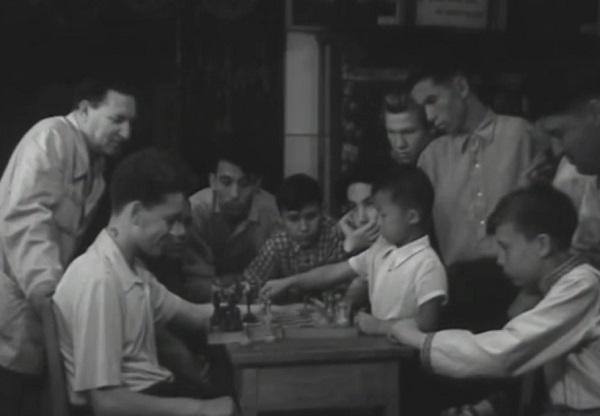
See C.N.s 8884, 8886, 9742, 9756, 11068 and 11647.
Kirkham, J. Henry
When aged 13 J. Henry Kirkham of Newington was mentioned on page 334 of the American Chess Journal, May 1879 as a good player and problem-solver.
Lengden, John
Born in Manchester on 30 October 1902. A biographical note and game were given on pages 119-120 of the March 1912 BCM. See page 54 of Chess Explorations and C.N. 3947.

John Lengden
Leonard, James A.
A New York player (1841-62) notable for his blindfold prowess who was discussed on pages 133-140 of Kings, Commoners and Knaves and pages 93-96 of A Chess Omnibus. A monograph on him by John S. Hilbert was published by McFarland & Company, Inc. in 2006 (C.N. 4087).
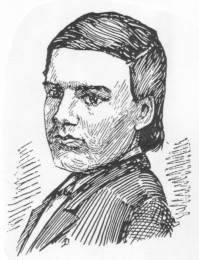
See James A. Leonard.
Letelier Martner, René
In the 1930s Chile had a number of strong young players, including René Letelier Martner (born 1915), whose name gained in familiarity when a loss to Fischer was included in My 60 Memorable Games.
The photograph below was published on page 335 of El Ajedrez Americano, November-December 1932:
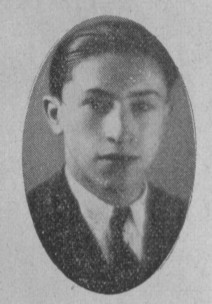
René Letelier Martner
From the same periodical (1932 and 1933 issues) seven early games by Letelier were given in C.N. 3844.
Limbos, Paul

See C.N. 8536.
Litzberger (Litsberger), Rune
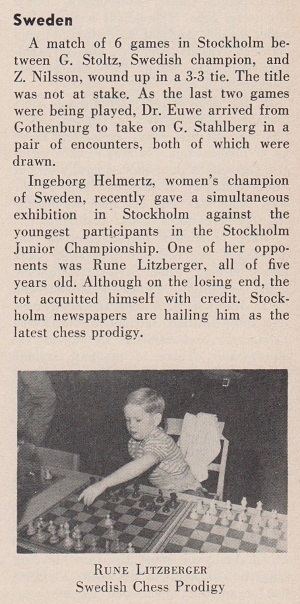
Chess Review, May 1952, page 135
See C.N. 10283.
Loomis, Alfred
From Brian Ridgely (Raleigh, NC, USA):
‘The recent death of Henry Loomis, the former head of Voice of America, brought to mind his father, Alfred Loomis. The elder Loomis was one of America’s wealthiest men in the first half of the twentieth century and a key, if somewhat unsung, figure in the winning of World War II. He was also a chessplayer, and the following appeared on page 19 of Tuxedo Park by Jennet Conant (New York, 2002):
“By age nine, he was a chess prodigy and [...] by age 13 he could play ‘mental chess’ without aid of a board or pieces and could play blindfolded, carrying on two games simultaneously.”
Other passages tell of Loomis playing blindfold (sometimes multiple games) well into adulthood. Is there any record of competitive play by him?’
(5873)
See too C.N. 5879.
Lopez/López, S.
A 14-year-old boy from Havana who won odds games against Steinitz.
See C.N. 4910.
MacLeod, Nicholas
Nicholas MacLeod (1870-1965) was a participant at New York, 1889. An earlier tournament performance of his was highly praised on page 230 of the June 1885 BCM. Jeremy Gaige provided a biography of MacLeod in C.N. 479.
Martínez, Charles S.
Charles S. Martínez (1868-1941) was the son of Dión M. Martínez. A combinational finish to his game against W.E. Wayte in Germantown, 1885 was published by Steinitz on page 153 of the May 1885 International Chess Magazine. See page 78 of A Chess Omnibus.
Mikeladze, Iberie
La Stratégie, 15 August 1885 (page 247) reported that Iberie Mikeladze was an eight-year-old prodigy, the son of Prince Mikeladze. A game of his against Bakradze in Kutais, 1886 was given. See page 76 of A Chess Omnibus (C.N. 2330).
Moore, Robert Thomas
C.N. 6755 gave, courtesy of Jerry Spinrad (Nashville, TN, USA), this report from the New York Sun, 1 April 1888, page 9:
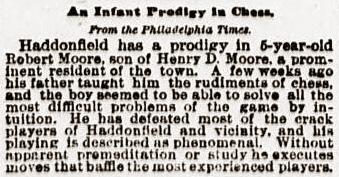
It was mentioned that our correspondent’s Internet searches had identified the ‘infant prodigy’ as Robert Thomas Moore (1882-1958), an eminent ornithologist and poet.
We added that his obituary on page 37 of the New York Times, 3 November 1958 also described him as the ‘retired research associate professor in vertebrate zoology of the California Institute of Technology and Occidental College’. His son was the explorer Terris Moore (1908-1993).
Mora Iturralde, María Teresa
The Cuban prodigy to whom Capablanca gave lessons, as he reported in My Chess Career. See page 56 of Chess Explorations and pages 122-123 of A Chess Omnibus. Her year of birth is usually given as 1907, but C.N. 3468 discussed the evidence that she was born five years earlier.

María Teresa Mora and Edward Everett (November 1916)
Morphy, Paul Charles
Almost everything known about Morphy as a prodigy is to be found in Paul Morphy The Pride and Sorrow of Chess by D. Lawson (New York, 1976). As far as we are aware, no picture of Morphy as a child has been found.
Muffang, André
A game won by André Muffang (1897-1989) against A. de Poplawski in Paris on 26 March 1913 was published in La Stratégie, April 1913, pages 146-147. See page 79 of A Chess Omnibus (C.N. 2450).
Myer, Edward/Myers, Robert
See C.N.s 6871 and 6878.
Nadel, Siegfried
In its report on the Hastings, 1930-31 congress, pages 63-64 of the February 1931 BCM stated that ‘S. Nadel, the 16-year-old boy from Berlin, gave a simultaneous blindfold display against eight players. Most of the games had to be adjudicated, the final figures being: 2 wins, 4 draws and 2 losses. The players who scored wins against him were Mrs Wheelwright and D.A. Breach.’ Page 60 of the same issue recorded that Nadel had finished last in the Major A tournament in Hastings, but: ‘He is only 16 years of age and has been playing chess for only two years. To be a blindfold exponent on such short experience is really remarkable.’
Napier, William Ewart
Comprehensive coverage of William Ewart Napier as a prodigy was provided in Napier The Forgotten Chessmaster by John S. Hilbert (Yorklyn, 1997).
Neimark, Celia
Page 171 of the American Chess Bulletin, September-October 1921 reported that Celia Neimark, aged seven, had defeated the Ohio State Champion, Irving Spero. The score was reproduced on pages 79-80 of A Chess Omnibus. The photograph of her below in Cleveland (with an inverted board) was published on page 206 of the December 1921 issue of the Bulletin:

Celia Neimark
John Blackstone (Las Vegas, NV, USA) has provided a report from the Brooklyn Daily Eagle of 8 September 1921 (page 2):
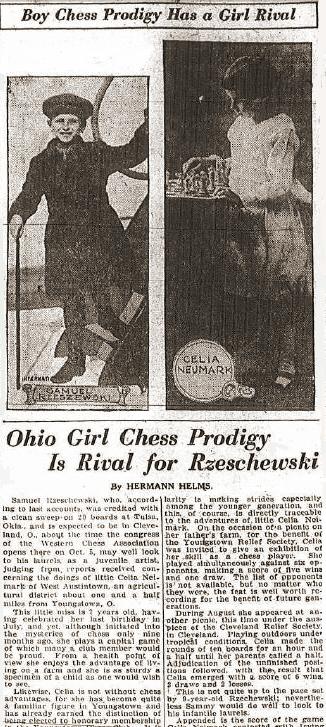
See too C.N. 8463.
Norton, Frank
A problem composer born in 1866 who gained attention in the 1870s. See page 366 of A Chess Omnibus and pages 222-224 of Chess Facts and Fables for further information (including problems and games), as well as C.N. 7078.
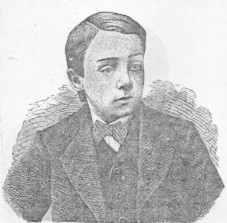
Frank Norton
Pomar Salamanca, Arturo
The mid-1940s saw the publication of two monographs, Mis Cincuenta Partidas con Maestros (Madrid, 1945) and La Vida de Arturito Pomar by J.M. Fuentes and J. Ganzo (Madrid, 1946). Two specimens of his play were given on pages 114-116 of A Chess Omnibus.
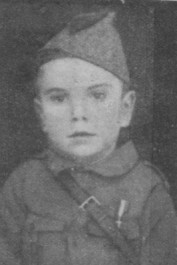
Arturo Pomar, aged five
Source: opposite page 16 of La vida de
Arturito Pomar by J.M. Fuentes and J. Ganzo (Madrid, 1946)
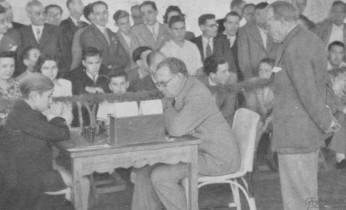
Arturo Pomar in play against
Alexander Alekhine, Gijón, July 1944
Source: see C.N. 5111.

Savielly Tartakower and Arturo
Pomar, London, 1946
Source: Chess Review, February 1946, page
9.
Feature article: Arturo Pomar (1931-2016).
Pomoschnikov, Pavel
C.N. 3818:
Information is sought on a youngster referred to by Nikolai Grekov in his reminiscences quoted (from where?) by J. du Mont on pages 14-16 of Capablanca’s Hundred Best Games by H. Golombek (London, 1947):
‘The following curious episode took place during the 1936 Moscow tournament. In the interval a 13-year-old schoolboy, Pavel Pomoschnikov, approached Capablanca and in fluent French challenged the ex-champion to a game. Not wanting to distress the boy, Capablanca consented. Having lost three games in succession, Pavel Pomoschnikov demanded a handicap of a queen. Capablanca replied that a queen was too much. The boy then solemnly declared that in ten years he would play against Capablanca as an equal and with better success. The Cuban champion advised the young champion to prepare well for the coming match and presented him with an autographed copy of his book on chess.’
Raud, Ilmar
See C.N.s 4905, 4944, 10062 and 10375.
Reed Valenzuela, Enrique
Enrique Reed Valenzuela (1915-1958) of Chile won his country’s championship in 1932. His earliest game known to us is a 50-move loss against Alekhine in a simultaneous exhibition in Santiago on 27 December 1927. The game-score was given on pages 7-8 of Alekhine in Europe and Asia by J. Donaldson, N. Minev and Y. Seirawan (Seattle, 1993), which quoted Alekhine’s remark at the time: ‘Enrique Reed also is a promising youngster, and he showed an excellent temperament’. Alekhine gave him further praise when annotating the game Reed v Danielsson, Buenos Aires, 1939 on pages 73-75 of Gran Ajedrez (Madrid, 1947):
‘One of the very few revelations of the 1939 Buenos Aires Olympiad was Ernst [sic] Reed, the young Chilean (of Germany ancestry) whose style was distinguished by its clear energy and daring attacking conception.’
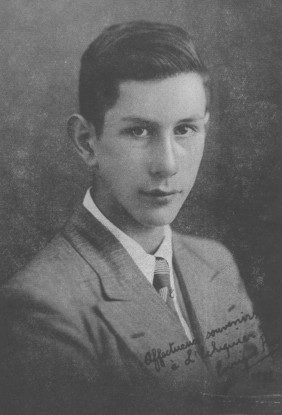
Enrique Reed Valenzuela
The May-June 1932 issue of L’Echiquier had the above portrait, as well as, on pages 1747-1748, four of his games from the 1932 national championship. They were given in C.N. 3843.
Reeve, Birdie
Chessplayer and vaudeville typist. See Who Was Birdie Reeve?
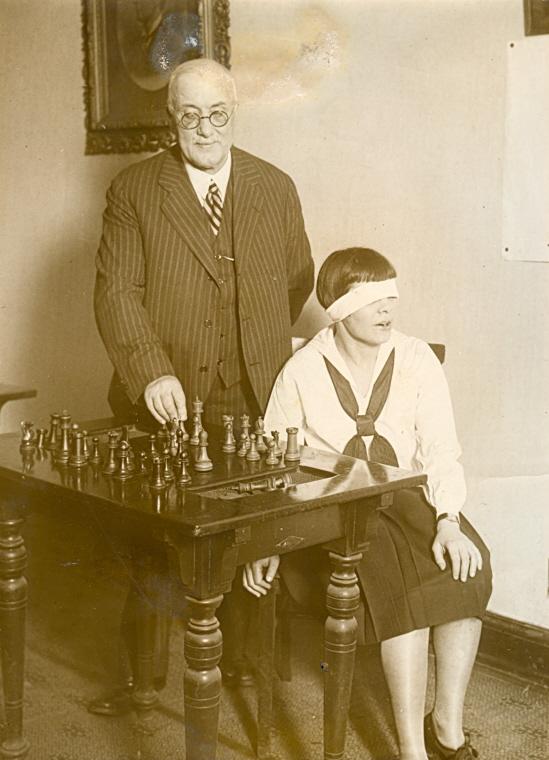
A.J. Quigley and Birdie Reeve
Reshevsky, Samuel
See The Chess Prodigy Samuel Reshevsky and Testing Reshevsky.
Rohner, W.A.
W.A. Rohner of Hamilton, Australia was mentioned on page 149 of La Stratégie, April-May 1879 and page 334 of the American Chess Journal, May 1879 as a 12-year-old who had won a local tournament.
Rolfe, William J.
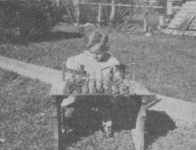
William J. Rolfe
Under the heading ‘American masters in the Making’, page 39 of the February 1932 American Chess Bulletin published photographs of two Chicago infants playing chess (separately), ‘William J. Rolfe Jr. (Aged three years)’ and ‘Paul D. Zaremba (Aged 21 months)’. Rolfe senior claimed that little William ‘plays the Giuoco Piano like a veteran’, but little Paul’s favourite opening, if any, was not recorded.
(2296)
See also the entry below for Paul D. Zaremba.
Russell, Franklin
See C.N.s 7160 and 7167.
Salot, Henry
A six-and-a-half-year-old prodigy from Philadelphia, according to a report on page 275 of the August 1916 BCM, taken from L’Eco degli Scacchi. See page 54 of Chess Explorations.
Sammour Hasbun, Jorge
C.N. 4256:
‘Not since Raoul Capablanca from Cuba has anyone from Latin or Central America generated so much excitement.’ So wrote Mark Tran on page 9 of The Guardian, 5 October 1991, in an article about a 12-year-old boy from El Salvador. ‘... At the legendary Manhattan Chess Club, where Bobby Fischer honed his game, grandmasters crowd around a phenomenon who is already compared to the American genius.’ The prodigy himself was quoted as follows: ‘If God wants, I will be champion at 20.’
The player in question was Jorge Zamora, known nowadays as Jorge Sammour Hasbun.
Sánchez, Enrique
See C.N.s 8683 and 12150.
Saunders, Elaine
See The Chess Prodigy Elaine Saunders.
Solomon, Abie
Born in Minsk on 23 December 1892 and emigrated to the United States circa 1897. Abie Solomon was active in the San Antonio Chess Club in Texas, and an account of his chess play was published on pages 15-16 of the November-December 1906 issue of Lasker’s Chess Magazine:
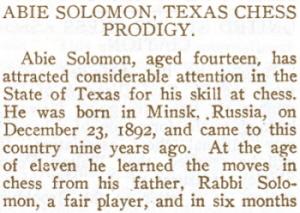
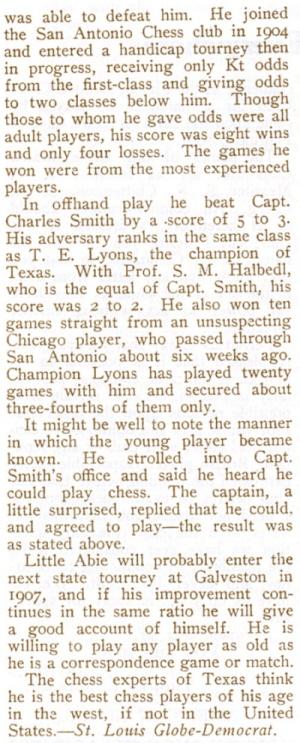
For a game played by Solomon in 1906, see C.N. 7222.
Sopia, Zurab
C.N. 4874 quoted this report on page 115 of CHESS, 1 January 1964, published under the title ‘Chess expert aged four’:
‘A four-year-old Georgian boy, Zurab Sopia, is beating many grown-ups at chess, the newspaper Leninskoye Znamya has reported. The former world chess champion Mikhail Botvinnik has visited him at his home near Sukhumi to help him polish his game still further.’
Spalding, F.S.L.
A prodigy solver from Plymouth, England who was discussed on page 142 of the March 1902 BCM. See page 54 of Chess Explorations.
Stella, Mademoiselle
An account was published on page 177 of La Stratégie, 15 June 1895. See C.N. 3145.
Stewart, Mervyn
‘New Zealand is the latest country to announce a chess “prodigy” – in the person of 14-year-old Mervyn Stewart of the Christchurch Club.’
Source: CHESS, February 1943, page 68.
‘Mervyn Stewart, aged 16, created the sensation of the tournament [the New Zealand championship in Auckland] by taking fourth prize with 7½ points. He is a “natural” player and, with the necessary study and experience, great things are expected of him.’
Source: BCM, June 1945, page 142.
(7505)
Sumar, Julio
Born in 1932, Julio Sumar (from Peru) was discussed, with an illustrative game, on page 254 of the August 1947 BCM. See pages 55-56 of Chess Explorations.
Taffs, Anthony J.
A prodigy problem composer. See C.N.s 10333 and 10366.
Tayan
From page 156 of the 14 January 1938 CHESS:
‘A new young chess wizard has just burst into the news. Not an Esthonian but an Eskimo. Russian scientists wintering on Wrangel Island in the Chutkhotsk Sea taught some of the natives chess. One of the latter, Tayan by name, took to the game like a fish to water and finished first above several strong players among the Russians in a tournament.’
Corroboration of this report is sought.
(9398)
Therien, Loic (Thérien, Loïc)
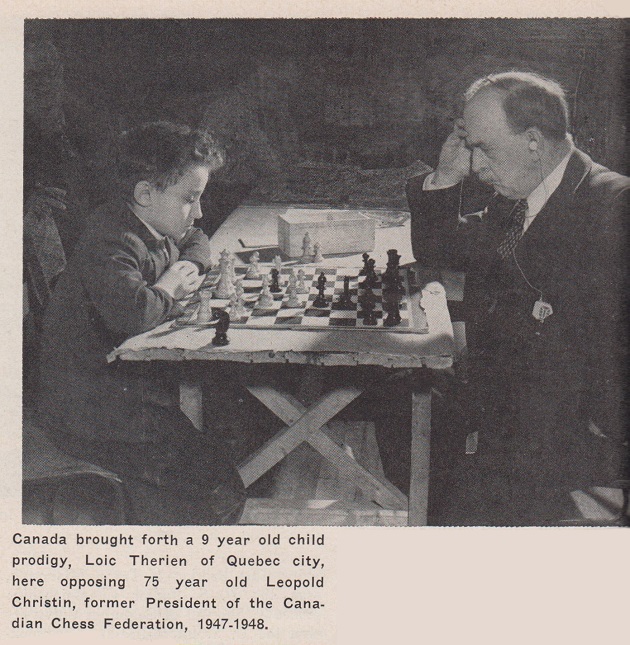
Source: Chess Review, January 1953, page 4.
(10437)
Thompson, C.
On page 219 of the July 1890 International Chess Magazine Steinitz published a game won by C. Thompson against J.D. Elwell in Brooklyn, 1890. Thompson was aged 18. See pages 78-79 of A Chess Omnibus.
Vaux, Leonard
From page 50 of the Columbia Chess Chronicle, 15 September 1889:
‘Leonard Vaux, a youth of 16, who has just graduated from the High School at Brockton, Ont., has beaten all the chessplayers in his neighborhood, and is spoken of as a prodigy.’
C.N. 9353:
Jerry Spinrad (Nashville, TN, USA) notes that information about Francis Leonard Vaux available on the Internet includes a detailed biography on page 262 of The Canadian Journal of Medicine and Surgery (Toronto, 1906). The Journal item and other sources indicate that ‘Brockton’ in the Columbia Chess Chronicle should read Brockville.
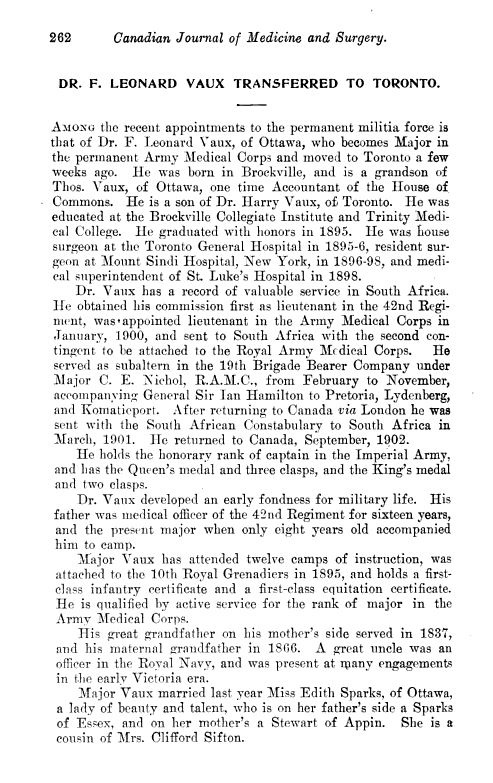
Viesca, Andrés Ludovico
Andrés Ludovico Viesca was a Mexican prodigy born in Parras de la Fuente on 8 April 1869. A win against José Martí was published in El Fígaro of 8 October 1893. See pages 52-53 of Chess Explorations, which includes the game-score. A second game and a photograph of Viesca were given in C.N. 6523.
Wahrburg, David
At the age of 14 David Wahrburg of Stuyvesant High School drew against Capablanca in a simultaneous display at the Manhattan Chess Club, as reported on page 42 of the March 1922 American Chess Bulletin.
White, Alain Campbell
See C.N. 4875.
White, Robert C.
According to pages 73-75 of the April 1917 American Chess Bulletin, at the age of 12 Robert C. White held Frank Marshall to a draw in a 144-board simultaneous exhibition in Buffalo on 8 March 1917. See page 130 of Kings, Commoners and Knaves.
Wiasemsky/Wiazemsky, Princess Tatiana
See C.N.s 7633, 9229 and 10860.
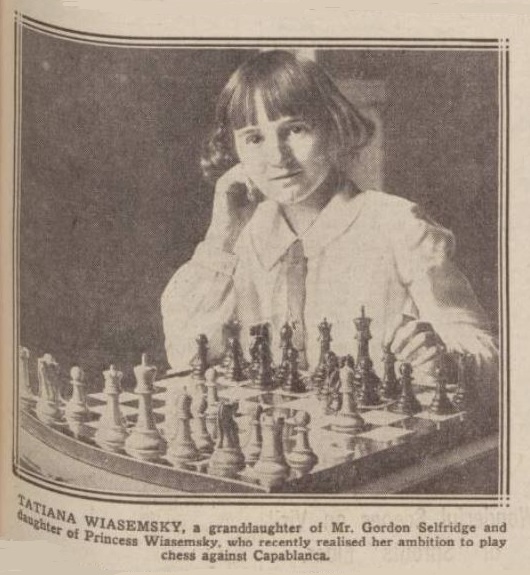
Woolf, George William
Born in South Hackney, London on 22 October 1893, and the subject of a feature, including a game, on pages 414-415 of the October 1901 BCM. See page 53 of Chess Explorations.
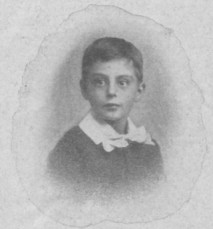
George William Woolf
Wurzburg, Otto B.
C.N. 3850:
Neil Brennen offers the following early mention of O. Wurzburg, in the Denver Republican, 2 October 1887:
‘Master Otto Wurzburg, aged 12, William A. Shinkman’s nephew, is said to possess great talent as a composer, and C.G. Hallock, 13 years of age, took the first prize in the last tournament of the Minnesota Chess Club.’
Yanofsky, Daniel Abraham (Abe)
See the references in the present article, as well as Daniel Abraham (Abe) Yanofsky.
Zaak, Ralph
See C.N. 7233.
Zaremba, Paul D.
A photograph of Paul D. Zaremba at the age of 21 months was published on page 39 of the February 1932 American Chess Bulletin. (See also the entry above for William J. Rolfe Jr.)
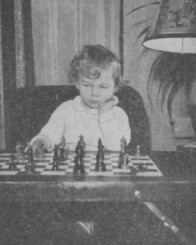
Paul D. Zaremba
Do readers know of any general books on prodigies which include information about chess Wunderkinder? One volume in our collection is Mental Prodigies by Fred Barlow (Hutchinson’s Scientific and Technical Publications, London, 1951), but the brief, insubstantial chapter on chess (pages 119-125) is not worth seeking out.
(2846)
Michael Clapham (Ipswich, England) writes:
‘The players listed below all represented their countries in Olympiads between 1927 and 1950 while aged 18 or under. This information has been compiled from the dates of birth recorded in Chess Personalia A Biobibliography by J. Gaige (Jefferson, 1987) for the players listed in Chess Olympiads by A. Földeák (Budapest, 1966).
- Erich Eliskases was 17 when he represented Austria in the 1930 Olympiad in Hamburg.
- Reuben Fine and Albert Simonson were both 18 when they represented the USA in the 1933 Olympiad in Folkestone.
- László Szabó was 18 when he represented Hungary at the 1935 Olympiad in Warsaw.
- Daniel Yanofsky was only 14 when he made the highest percentage on second board representing Canada in the 1939 Olympiad in Buenos Aires.
- Carlos Salazar was 14 or 15 when representing Guatemala at the 1939 Olympiad. I have assumed here that the Salazar recorded in Chess Olympiads is the C. Salazar of Guatemala, born in 1924, recorded in Chess Personalia (exact date of birth not given), but I cannot be certain about this.
- Larry Evans was 18 when he represented the USA in the 1950 Olympiad in Dubrovnik.’
(4001)
In C.N. 4765 (December 2006) Rod Edwards (Victoria, BC, Canada) drew attention to an unnamed prodigy:
‘In his column in the Illustrated London News of 22 November 1856, page 532, Staunton gave the following response to a correspondent, “Septimus”:
“A more remarkable instance of precocious chess genius was the nephew of Mr Pratt (the editor of a well-known edition of “Philidor”). This young Titan, only 15 years of age, at the contest for a prize given by Mr Holford many years ago, entered the arena against the redoubtable Cochrane, then a first-rate player, and was within an ace of carrying off the trophy. We have heard Mr Cochrane admit that it was by the merest accident he saved the match.”
The term “precocious chess play” had been used by Staunton three weeks earlier in an apparent reference to Morphy in the column on page 460 of the 1 November 1856 issue, responding to C.A. Maurian:
“Your communication, dated June, appears to have made a wide circuit. We are glad that at length it has reached its destination, and thank you for the extremely interesting specimen of precocious chess play it contains. If the young Philidor of New Orleans proceeds as he has begun, he will soon rival the oldest and best players of the age.”’
The full column is shown below, kindly provided by Mr Edwards:

Christopher Lenard (Bendigo, Victoria, Australia) writes:
‘Does any comparative study exist of the early games of chess prodigies, i.e. the games of youngsters who have a strong natural aptitude but have not yet been exposed to much formal study? In particular, I am interested in what similarities, if any, exist among such players from over the last century or so. For example, do very strong but “naïve” (untutored) players tend to spot and exploit certain types of patterns?’
The subject of chess prodigies has received surprisingly little treatment in chess literature. For an historical sweep, only two books come to mind – Great Games by Chess Prodigies by Fred Reinfeld (New York, 1967) and Los niños prodigio del ajedrez by Pablo Morán (Barcelona, 1973) – but neither adopted a scientific or academic approach. Can readers quote any articles covering the specific field mentioned by our correspondent or dealing authoritatively with the more general topic of chess Wunderkinder?
(6148)
We note a further book on the subject of chess prodigies: Шахматные вундеркинды (Shakhmatnye vunderkindy) by E. Gik (Moscow, 2006). Its main focus is on relatively recent players.
(7024)
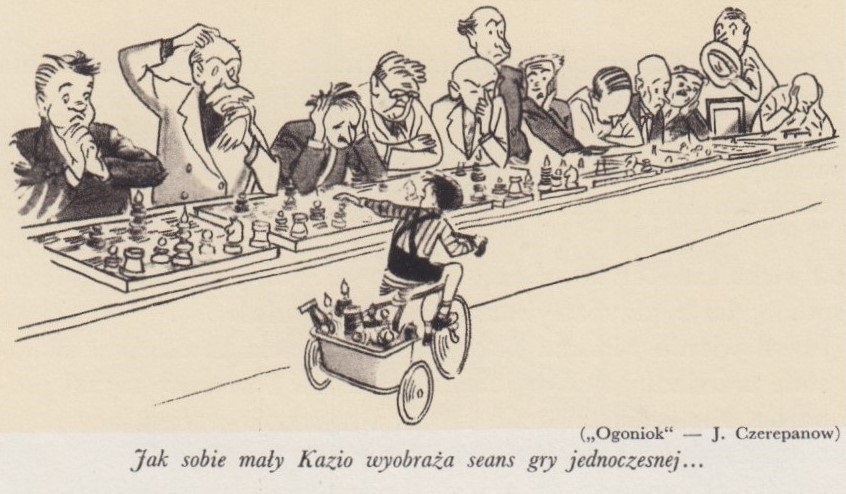
Source: page 98 of Z szachami przez wieki i kraje by Jerzy Giżycki (Warsaw, 1960)
See too C.N. 11701 (Purdy on Jutta Hempel and on prodigies in general).
A short game won by the 12-year-old Victor Abraham circa 1860 was given in C.N. 3860. Concerning Oscar Bilgram (1878-1958) see C.N. 3873. Daniel Abraham (Abe) Yanofsky was discussed in C.N.s 3881 and 12159.
Olimpiu G. Urcan (Singapore) has forwarded an article ‘Lasker Explains Chess Prodigies’ by William Weer on page 6 of the Sunday Eagle Magazine (Brooklyn), 16 May 1926:
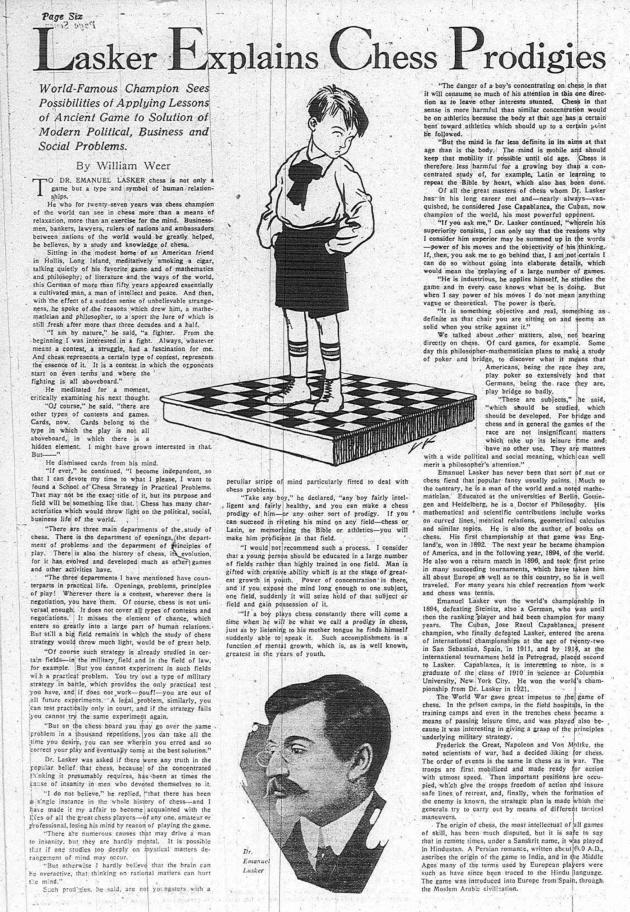
(7665)
From our file of Evening Standard cuttings we present a montage of some articles by Leonard Barden:
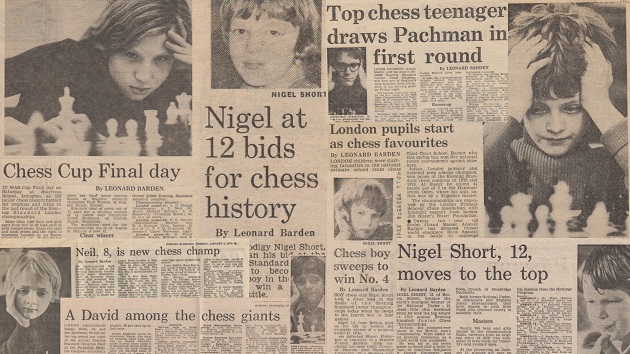
The players are Neil Carr (4 January 1977), Julian Hodgson (11 May 1974), Simone Leberman (7 January 1974), David Norwood (1 August 1977), Nigel Short (28 December 1977, 30 December 1977 and 3 January 1978) and Jonathan Speelman (12 December 1972).
(10990)
An image provided by Olimpiu G. Urcan:
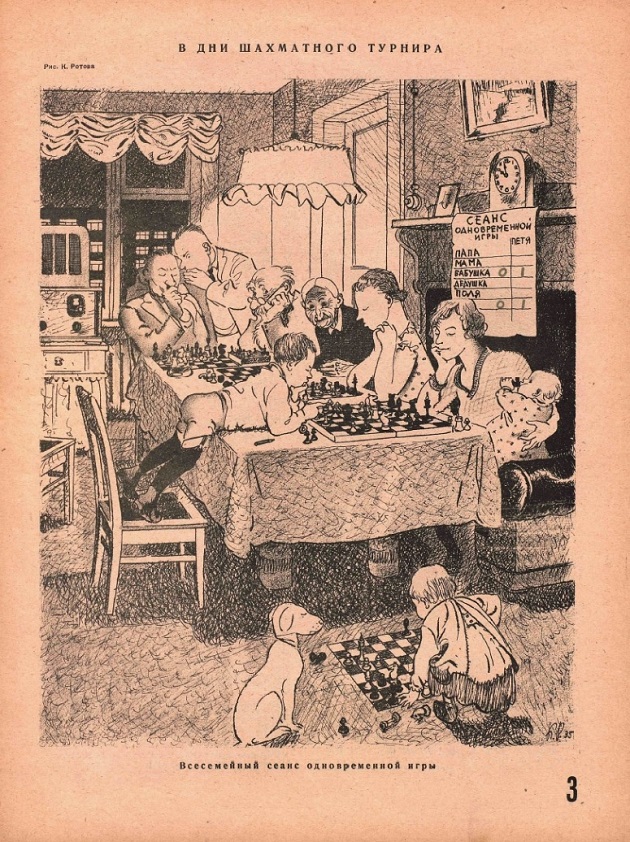
Source: the 4/1935 issue of the Soviet satirical magazine Крокодил.
(11922)
From Michael McDowell (Westcliff-on-sea, England):
‘In G.F. Anderson’s book A Memorial Volume of Chess Problems of V.L. Eaton (page 2) the second problem is the following:
V.L. Eaton, 10th Honourable Mention, Cincinnati Enquirer, 3 November 1929
Mate in two.
Key: 1 Bb7.
Anderson’s commentary reads:
“Several solvers were lyrical about No. 2. One wrote: ‘If the author is really “just a boy” and “just a novice”, as you mention in your comment, it is really remarkable because I can picture the existence of a prodigy in music, in painting, or in any department of Art, even in practical chess playing, but I cannot bring myself to believe there can be any such thing as a prodigy in chess problem constructing.”
To which Anderson added:
“He was wrong of course, because chess problem composition is a ‘department of Art’.”
Eaton was born on 31 August 1915. Problem 1 in Anderson’s collection was published in the Cincinnati Enquirer on 22 September 1929 but is poor compared to the above problem. The book also mentions that an earlier problem was published in the Washington Post some time in 1929, but was cooked.
Fourteen does not seem particularly young to be starting composition, especially when Lilian Baird is considered. A more striking case is the following:
R. Rastogi, The Problemist, May 1979
Mate in two.
Key: 1 Be7.
Barry Barnes’ commentary read:
“C6216 is a first problem by Master Rastogi, who is a ten-year old Indian lad at Robert McWilliam’s school. Old readers will recall the McWilliam Tourneys, which did so much to foster young ‘under 21’ talent.”
Alas, Master Rastogi appears not to have composed a second problem.
On the subject of prodigies, I would also draw attention to page 89 of Sam Loyd and his Chess Problems by A.C. White, which discusses the Bettmanns and the mysterious Harry Rowe. (I have never seen a problem by the latter.)’
Regarding V.L. Eaton, who died in 1962, below from our collection is an undated index card addressed by him to an unidentified correspondent:
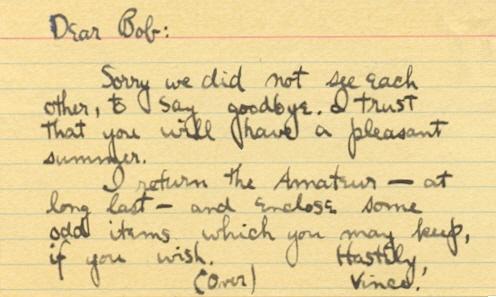
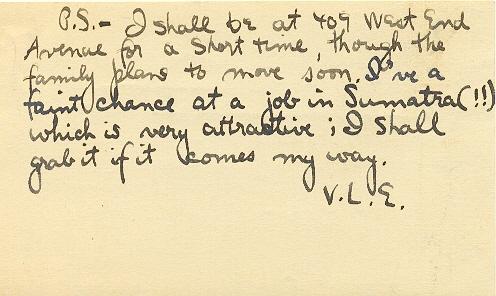
(4613)
See also Articles about Chess Prodigies, Chess: Prodigies, Philosophy and Mathematics and Nineteenth-century Chess Prodigies.
Latest update: 20 June 2025.
To the Chess Notes main page.
To the Archives for other feature articles.
Copyright: Edward Winter. All rights reserved.